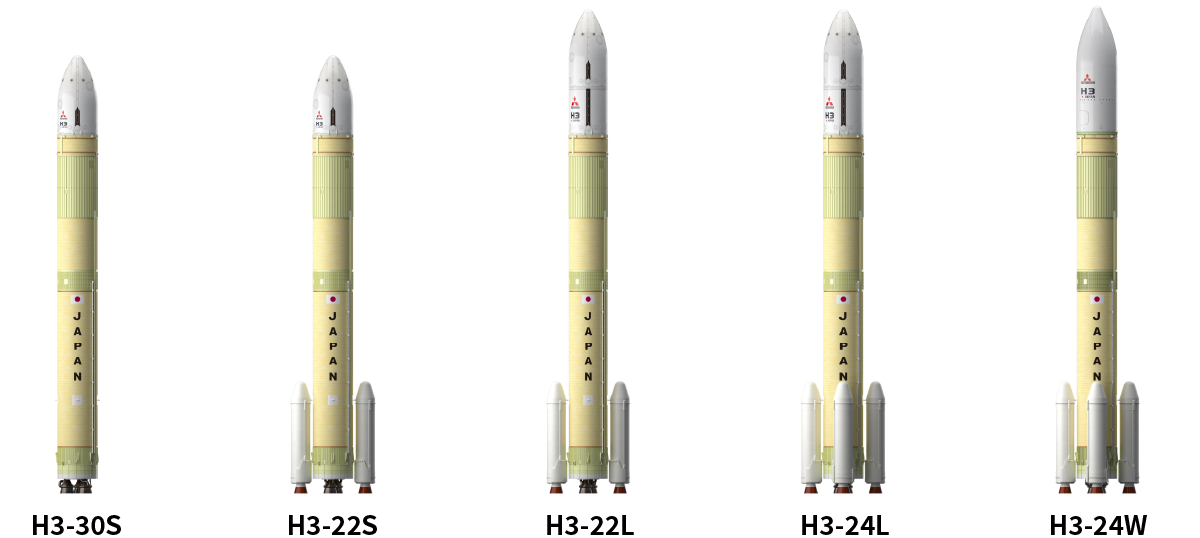MHI Launch Services: Launch Vehicles
MHI Launch Services: Launch Vehicles
H3
The H3 launch vehicle is Japan's flagship rocket jointly developed by JAXA and MHI. Overcoming the failure of Test Flight 1 in March 2023, it has performed consecutive successful launches since the launch of Test Flight 2 in February 2024.
With the H3 launch vehicle, we aim to provide launch services more closely aligned than ever before with customer needs, offering numerous launch opportunities.

Overall
| Type | H3 | |
|---|---|---|
| Height | 63 meters(In the case of long fairing.)、57 meters(In the case of short fairing.) | |
| Gross Mass | 575 tons(H3-24L)、420tons(H3-22L)、419 tons(H3-22S)、270 tons(H3-30S) | |
| First Stage Engine | LE-9×2 or 3 | |
| Second Stage Engine | LE-5B-3×1 | |
| SRB-A | SRB-3×0 or 2 or 4 | |
| Launch Capacity | GTO | 6.5 metric tons(ΔV=1500m/s) |
| SSO(Advanced 500km) | 4 metric tons | |



